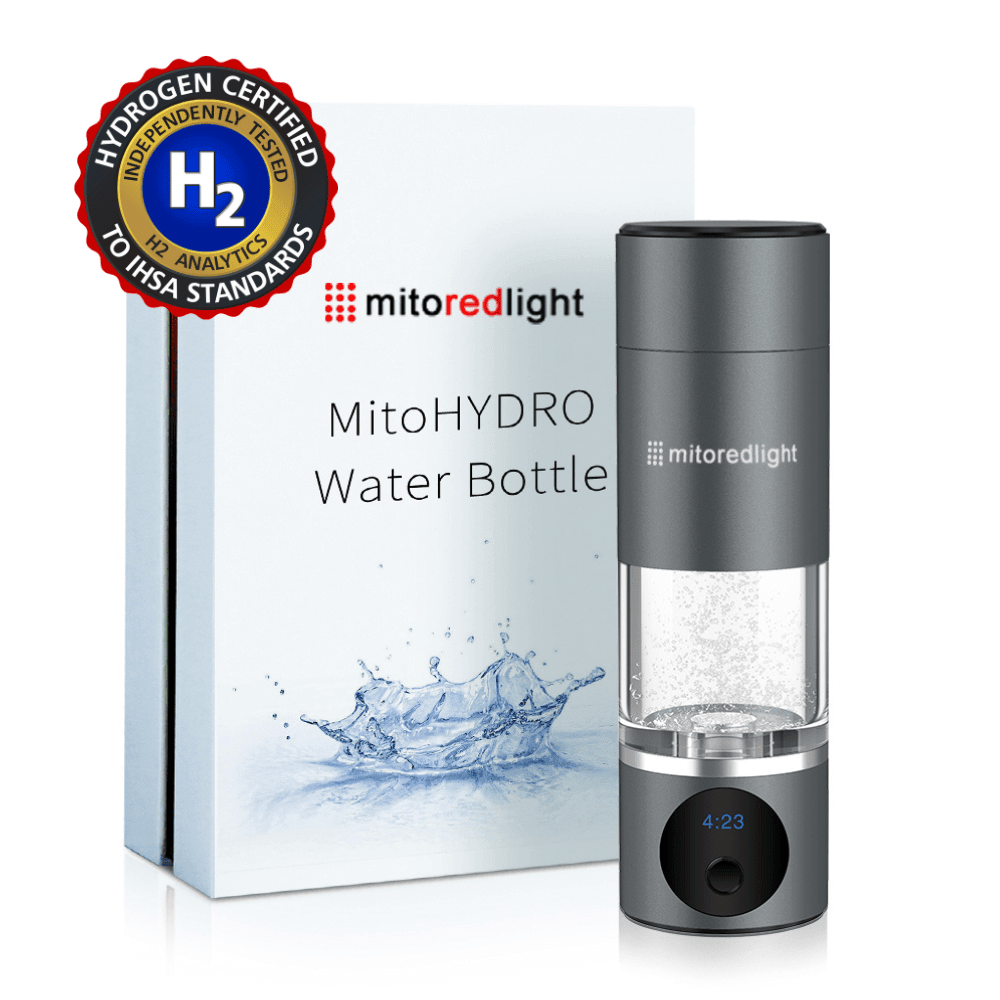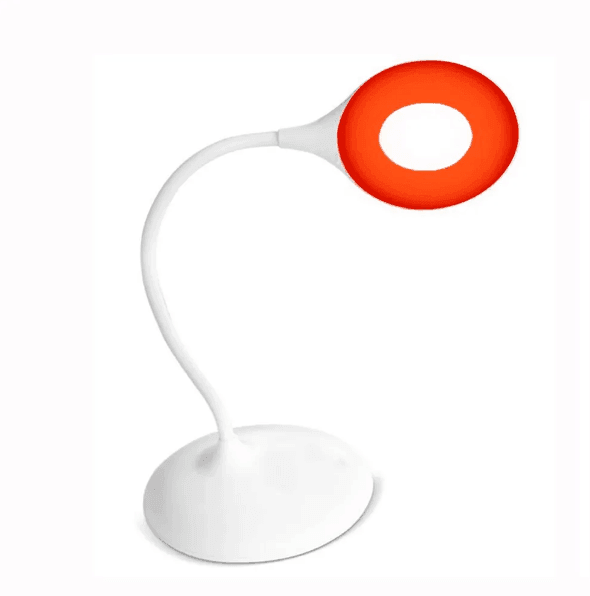DISCLAIMER: Mito Red Light devices are Class II wellness devices aimed at affecting the body through topical heating and supporting cellular function. The information provided in this article and on this site is for educational purposes only and is not intended to imply effectiveness of Mito Red Light devices for any specific application. The information provided in this article and on this site is not intended to diagnose, treat, cure, or prevent any disease, is not a substitute for consultation with a licensed medical provider and should not be construed as medical advice. Click here to read our article on potential contraindications of red light therapy..
Medically Reviewed by | Heidi Wright, BSN, RN, PCCN
If you’re one of the 20 million people who suffer from nerve pain caused by neuropathy, you may be looking for a solution to improve your quality of life.
Neuropathy can be debilitating and dramatically change the way a person lives from day to day. In some cases, neuropathy can be so severe that it results in life-threatening conditions, like irregular heart rhythms or the inability to swallow food properly.
For most people dealing with neuropathy, the main symptoms are pain and discomfort in the extremities, especially the feet and hands, that make it difficult to focus, ambulate properly, and even take good care of the skin in these areas. “This condition is called peripheral neuropathy,” notes Heidi Wright, Registered Nurse.
Together, we’ll talk about what neuropathy is, what causes it, and how red light therapy, a form of light therapy that was discovered by NASA, can help a person with neuropathy get the relief they need.
What Is Neuropathy?
Neuropathy refers to many different types of nerve damage. As such, there are many different types of neuropathy. Peripheral neuropathy is one of the most common types of neuropathy, and within the category of peripheral neuropathy, there are over 100 separate types.
Peripheral neuropathy generally refers to issues with peripheral nerves, or nerves that connect to and deliver information to the central nervous system. These nerves include the ones that give you your senses of touch, taste, smell, hearing, and also nerves involved with digestion and movement. When these nerves become damaged, a person may develop neuropathy.
What Are the Symptoms of Neuropathy?
When nerves become damaged, they can produce a variety of different, uncomfortable feelings. Neuropathy pain and discomfort varies from person to person and may even change from time to time in the same person. For instance, if you typically have feet that tingle from neuropathy, you may develop numbness in your feet for a period of time and then experience tingling again.
Symptoms of neuropathy can include but are not limited to:
- Muscle weakness
- Pain and tingling
- Twitching muscles
- Numbness
- Loss of sensation
- Sleep disruptions
In serious cases, more severe side effects may occur, like:
- Loss of bladder control
- Digestive issues due to nerve damage in the intestines
- Trouble with eating and swallowing
- Respiratory issues
- Changes in muscle or bone health
- Life-threatening issues related to breathing and heartbeat
Neuropathy is a progressive illness, and taking steps to address it is important so that you don’t lose mobility or experience further nerve damage. While there is no cure for neuropathy, it is possible to arrest the progression of further nerve damage and injury.
What Causes Neuropathy?
There can be many reasons why a person may develop neuropathy. One of the leading causes of neuropathy in the United States is diabetes, especially diabetes that is not well managed. If you are a diabetic, it’s very important to make sure your blood sugar levels are well controlled to avoid the development of neuropathy or the worsening of neuropathy you may already have.
Other causes of neuropathy can include:
- Inheriting a nerve condition or genetic nerve disorder. If a parent or direct relative has a nerve disorder, you may be more likely to have it.
- Sustaining an injury that causes nerve damage. Injuries to your body that affect your peripheral nerves can cause neuropathy. An example of this is a surgical incision or a cut on your finger that becomes numb or tingly after it has healed.
- Kidney disease. When kidney function declines, the buildup of fluids and waste products not eliminated by the kidneys can cause damage to nerves.
- Hormonal imbalance. Hormone levels that are unregulated and unbalanced can sometimes lead to nerve damage. In some cases, these hormonal imbalances are caused by another underlying issue or disease.
No matter the cause, the pain that is associated with neuropathy can be debilitating for some and incredibly uncomfortable for most. Because there is no cure, a person with neuropathy should focus on viable treatment options to help them experience less discomfort and put into practice a plan for their healthcare to help prevent future nerve damage.
How Is Neuropathy Generally Managed?
For most, neuropathy pain will be addressed with over-the-counter NSAID pain relievers or orthotics and other medical devices designed to help encourage blood flow to the affected areas or provide compression.
If neuropathy has progressed or if the nerves of the heart have been affected, a person’s healthcare provider might prescribe a medication to help them. In some cases, surgery to remove or completely destroy the damaged nerves will provide relief, but keep in mind that these types of surgeries are usually a last resort — because, along with the removal of these nerves, a person will also experience a loss of sensation.
Loss of sensation can be dangerous. If you lose sensation in your feet, for instance, you won’t just have trouble walking. You could also incur an injury to your foot (like stepping on a nail or a piece of glass) and not be able to feel it. Left untreated, it could lead to a serious infection and the potential risk of surgery or even losing an appendage.
How Can Red Light Therapy Potentially Help With Neuropathy?
While we continue to understand neuropathy and look for ways to help those affected manage it properly, we are also learning more about a technology discovered by NASA and implemented by the military.
Red light therapy, a branch of photomedicine, uses specific wavelengths of light to address numerous issues and conditions in the body:
- Skin rejuvenation and restoration
- Wound healing
- Sleep issues
- Hair regrowth
- Muscle and joint pain
- Improved physical performance
- Mood
- Cognitive function and brain health
Red light therapy is a research-backed, holistic way to address numerous conditions, and supporting nerve pain management from neuropathy is one of them.
What Is Red Light Therapy?
Red light therapy and near-infrared (NIR) light therapy are options that involve exposing the entire body or parts of the body to certain wavelengths of light to achieve certain benefits. The wavelengths of both red light and NIR light are long, low-energy wavelengths capable of interacting with the cells in our bodies.
UV light, on the other hand, is a high-energy, short wavelength that is not capable of penetrating the skin and may eventually cause skin damage after prolonged exposure. Red light has a wavelength that measures between 620-700 nanometers. NIR light measures between 800-900 nanometers and is capable of reaching both soft and hard tissue beneath the skin.
How Does Red Light Therapy Work?
The light-emitting diodes (LED) in red light therapy devices deliver wavelengths of light to the body part being treated. Red light is absorbed into the cells of the body, stimulating them to perform more efficiently.
As we age, our cellular function declines. This happens because the mitochondria within our cells are no longer able to produce as much adenosine triphosphate, or ATP, which the cells use for energy to carry out cellular functions.
Red light is absorbed by a molecule known as cytochrome C oxidase, which plays a role in how well the mitochondria create ATP. By stimulating this molecule, red light is able to help the mitochondria in the cells produce more cellular energy, fueling the cell to work harder and become more efficient.
Could Red Light Therapy Help With Nerve Pain?
One way that red light therapy may help address nerve pain is through increased blood flow. Improved circulation to the extremities may help reduce nerve discomfort and help to prevent further nerve damage to these areas.
In at least one study, red light therapy was found to support nerve repair and increase antioxidation levels in chamber fluid, a fluid produced after nerve damage that contains the ingredients to create new nerves. More studies will be needed to determine how this can benefit people who have damaged nerves, but it is promising to know that red light can interact with nerves in this manner.
How To Use Red Light Therapy
You’ll want to expose a body part (for instance, your feet) to red light for 5-20 minutes per day. “Find a position that is comfortable for you to stay in for this length of time, and be sure to remove your socks and shoes,” notes Heidi Wright, Registered Nurse. Keep in mind that red light does not contain UV rays, so there’s no risk of burning your skin. Use the product as directed by the manufacturer.
Are There Any Side Effects of Red Light Therapy?
Red light therapy is generally well-tolerated by most people. However, if you are photosensitive, have a medical condition that causes photosensitivity, or take a medication that makes you photosensitive, talk to your doctor before beginning a red light therapy routine.
You can use red light therapy to see if it helps with neuropathy by visiting a healthcare provider who offers red light therapy sessions, or by scheduling an appointment at a medspa or even visiting a red light therapy studio. These sessions are usually paid for out of pocket, and the cost can add up, considering that red light is most effective when it is used continuously for longer periods of time.
Investing in an at-home red light therapy device is a decision that could pay dividends for years. For at-home red light therapy devices, the choice is Mito Red Light.
Why Mito Red Light?
You’ve got options for red light therapy sessions, including seeing a medical professional, visiting a medspa, or treating yourself in the comfort and privacy of your own home. Our primary goal is to get you the device that works best for you and helps support your wellness best.
Our Lights
One consideration to remember when selecting a red light device is how many diodes it contains. Mito Red Light devices contain more diodes per square inch than competitors, so you never have to worry about dead space and you can rest assured you are receiving the maximum amount of light therapy every time you treat a body part.
Our Testing
We submit all of our devices to third-party testing to ensure they are within the therapeutic range of treatment. That means what we say our lights do and the wavelengths we say they produce are both accurate statements.
Accessibility
No matter what kind of device you need and what kind of space you have, we have a device that works for you.
Advanced Technology
Our devices are specially formatted with Enhanced Spectral Energy Output™, a technology that delivers energy across all spectrums of red and NIR light. You’ll only get that from Mito Red Light, and it ensures you’re getting peak wavelengths across different spectrums of light.
Something for Your Nerves
This year, make a decision to take back your health and restore your wellness. Red light therapy is a complementary alternative non-invasive, non-medicated modality that may help you feel better and support your lifestyle in a way that is comfortable and accessible.
Sources:
NASA Research Illuminates Medical Uses of Light
Peripheral Neuropathy | National Institute of Neurological Disorders and Stroke
Kidney Failure - The Foundation For Peripheral Neuropathy
Transcranial near-infrared light in treatment of neurodegenerative diseases|Frontiersin.org
Effect of near-infrared light-emitting diodes on nerve regeneration

























